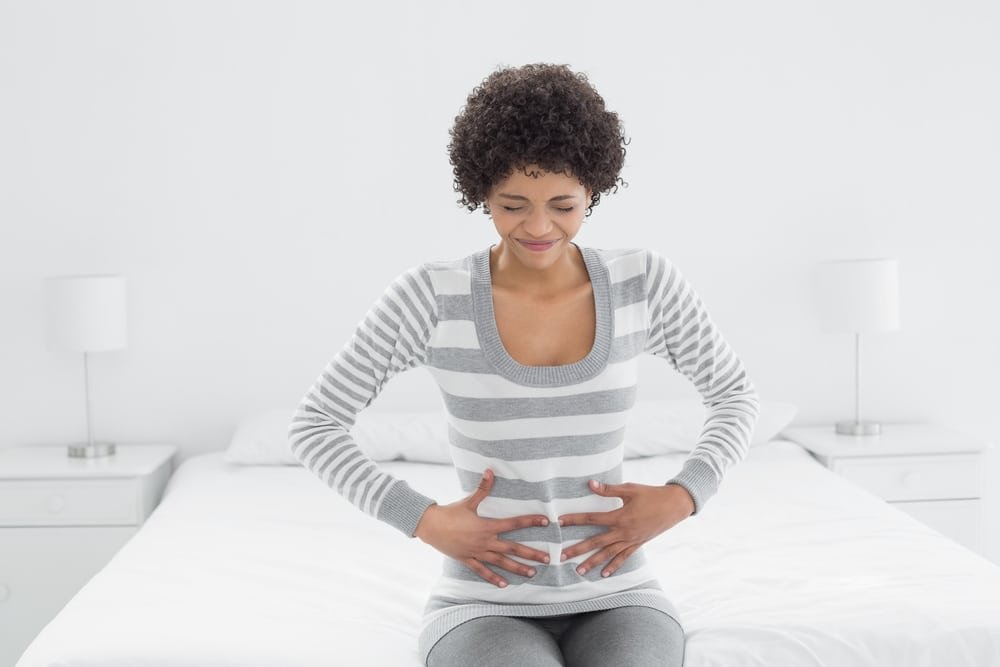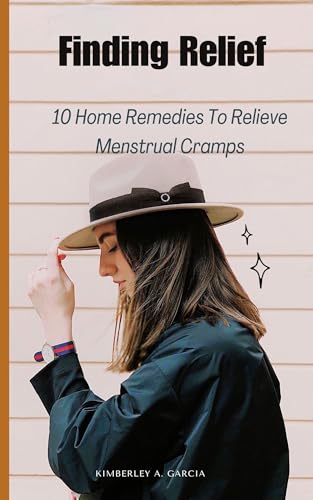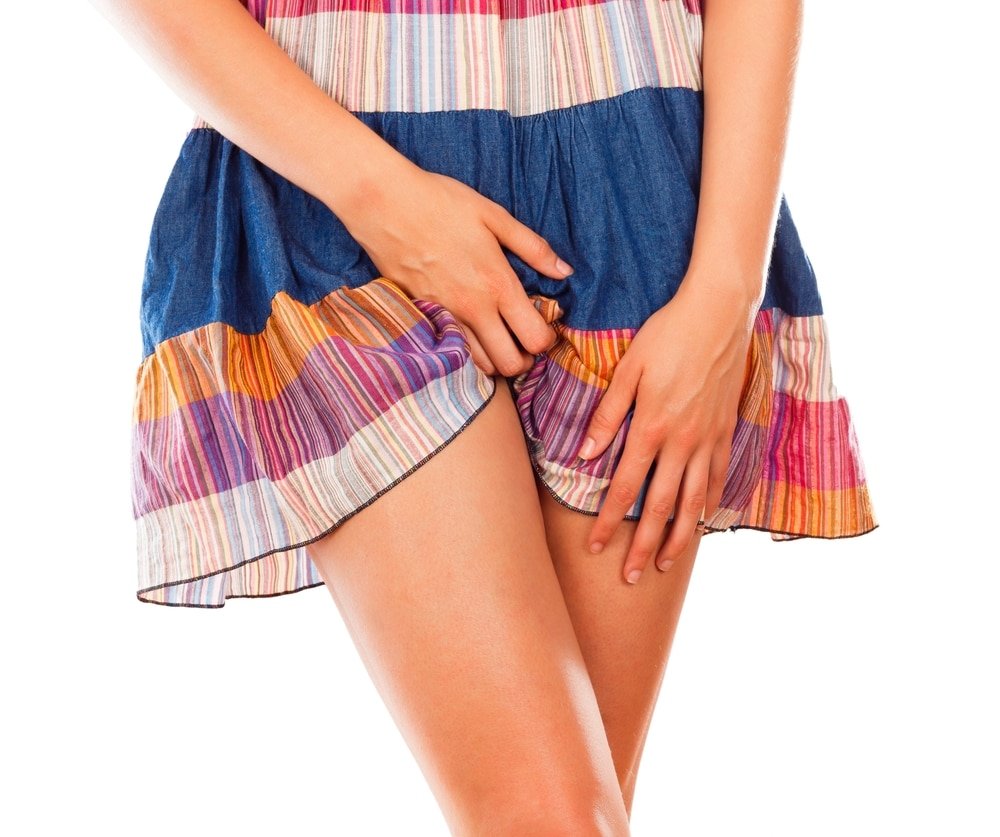Menstrual Cramps home remedies include chamomile tea, using dill, drinking enough water, performing certain exercises, using heat compress, eating more fatty fish and essential oil massage. Other remedies include drinking ginger tea, easting magnesium rich food and performing acupressure.
For many women, painful menstrual cramps are a rite of passage. However, what many women do not realize is that there really is no need to suffer through these cramps every single month, when there are effective home remedies you can make use of to alleviate your suffering.
The best part? You already have many of these remedies in your home, which means that you can likely experience some relief as early as today, if you need. They are inexpensive, and extremely safe, making them suited to women from all walks of life who have this one problem in common.
10 Home Remedies for Menstrual Cramps

1. Heat Compress
If you’ve ever been to the gym or experienced muscular cramps, there is a good chance you would have used local heat compression to help relieve the discomfort and loosen the muscles. Better yet, you may have spent time in a sauna after your workout, helping to relieve the delayed pain that occurs the day after. As it turns out, this practice can also help in relieving menstrual cramps. You can either spend time in a sauna which helps to relieve cramps the entire body over, or you can apply a hot water bottle or a warm washcloth to your lower abdomen for a period of time. In addition to relieving the pain from the cramps, it can also help speed up the shedding of the uterus walls, reducing the time spent in pain.
2. Chamomile Tea
Chamomile tea is widely accepted as a natural remedy for stress and anxiety, helping you sleep better in the process. But that’s not all it can do, as chamomile tea can also help to relieve menstrual cramping and pain associated with this time of the month. Research has found that chamomile tea contains one or more components that possess anti-inflammatory properties, which can help to reduce the intensity of pain felt during menstrual cramping. This was confirmed by testing the urine samples of women given the tea, in which the presence of a compound known as hippurate- a natural anti-inflammatory compound was found. Subjects also reported less pain that typically associated with the menstrual shedding.
3. Perform Exercise
Many women shy away from exercise completely during their menstrual period, but this is an error all for the sake of avoiding possible embarrassment. Exercise provides us with one of the most natural forms of pain relief; the endorphins, which are arguably very strong analgesics. Endorphins are so powerful that injuries often go unnoticed by runners during a marathon, until the endorphins rush subsides. Exercise also increases circulation to the abdominal area, so that shedding occurs faster. Coupled with the anti-inflammatory nature of exercise, and you can actually recover much faster, and without excessive cramping.
4. Use Dill
Dill is a common ingredient used in many meals, and is found frequently in homes all over the world. Dill possesses two unique properties that help to relieve menstrual cramping, and make the entire menstrual period less stressful. Firstly, is dill’s ability to directly relieve pain and inflammation. One study found that dill was comparable in potency to one of the most common medications used to treat menstrual cramping, mefenamic acid. Dill is far safer, however, as there are no nasty side effects associated with its use. Second, is dill’s diuretic property, which reduces the feeling of bloating, and the actual water retention that occurs and which can exacerbate the painful cramps.



5. Drink Enough Water
There is a big misconception that drinking water will worsen the water retention that occurs during the menstrual periods, but that is totally unfounded. Water has a way of balancing itself, by its actions on the electrolytes. When there is an abundance of sodium in blood, the body tries to eliminate it by flushing with water via urine. However, as the attempt to remove sodium is done, water levels are depleted, which can worsen cramping since dehydration ensues. Drinking water frequently, and ensuring you get your potassium rich foods in during the day will greatly reduce the likelihood of excessive cramping occurring. Do not skimp on water for fear of water retention; it regulates itself and will benefit your greatly during the menstrual cycle.
6. Eat More Fatty Fish
While fats are not normally advised during the menstrual period as they may worsen pain (as fats are involved in prostaglandin and inflammation signaling), fish oil is anti-inflammatory in nature and can help to relieve cramping and pain transmission. Though by itself it is unlikely to have a major effect, when used with other home remedies the effect can be cumulative.
7. Essential Oil Massage
An essential oil massage is very effective for relieving menstrual pain during active cramping, but for even greater effect should be used all month long. Essential oils including lavender and marjoram are particularly effective, and similar to chamomile, have a very calming nature. Part of their effect is believed due to relaxation of the nervous system, which can temper cramping and pain transmission. An essential oil massage also improves blood flow, and is said to reduce the duration of pain from 2.5 days to an average of 1.8. Be sure to dilute these oils for best effect, and to reduce risk of inflammation and irritation.
8. Drink Ginger Tea
Ginger is one of the best herbs when it comes to pain relief and reducing inflammation, also being effective in relieving bloating. The best way to make it is by steeping an inch sized cut of ginger in hot water for 5-10 minutes, then sipping until finished. It can be sweetened with honey if desired. Ginger is also used traditionally in many parts of the world as an emmenagogue as it stimulates the shedding of uterine wall tissue during the menstrual period. This can also cut the duration of bleeding and reduce the cramps.
9. Eat Magnesium Rich Foods
Magnesium rich foods are excellent for anyone to consume, but women experiencing troublesome menstrual c ramps stand to benefit the most. Magnesium is renowned as a natural mineral that helps to relieve pain, possibly owing to the fact that it helps to modulate nerve and muscle function. Since menstrual cramps are basically painful muscle contractions, anything that helps to regulate their function will help make pain less severe. Magnesium rich foods include dark green leafy vegetable such as spinach, almonds, black beans and avocados.
10. Acupressure
Acupressure and acupuncture are two techniques that work via manipulation of electrical channels on the skin, in turn altering the way nerves are able to transmit stimuli. Though acupuncture requires a lot of specialized training and is not particularly a home remedy, acupressure is easier to do and resembles a massage. It takes a bit of knowledge to identify chakra and acupressure points, but according to Chinese medical wisdom, clearing of the blocked channels can help to relieve the pain associated with menstrual cramps.
Conclusion
Menstrual cramps are virtually unavoidable. However, this does not mean that you need to be subjected to excruciating pain month after month, especially since there are home remedies you can use to reduce the suffering you feel. Just be smart, exercise and consume a good diet, and you will be halfway to having manageable periods.



Join the 7‑Day “Better Gut” Plan
Pop in your email and we’ll send Lesson 1 + the printable list.







